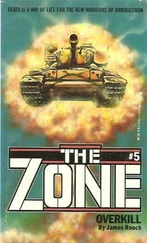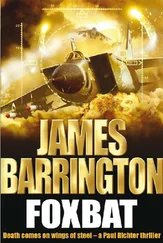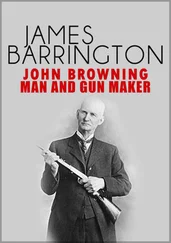‘It’s not surprising poor old Newman died in that, is it?’
‘It was not,’ Richter said, choosing his words carefully as they walked together back towards the Embassy building, ‘a survivable accident.’
Aspen Three Four
‘Radar contact. Green one five at sixty-five. Closing rapidly.’
‘Oh, fuck.’
‘No emissions, no classification, high speed. Broad spectrum jamming on; ECM on.’
‘Turning away. Keep talking.’
‘Stop the turn. Second contact. Red two zero at sixty-two miles. High speed, heading towards. No emissions. Probably two Foxbats, still under ground control. Both are high, above sixty. Contact to starboard designated Bandit One, contact to port Bandit Two.’
The SR–71A had turned to port, but Frank Roberts now straightened out and dived, picking up speed. The aircraft reached Mach 3.2 as it passed seventy-five thousand feet.
‘Bandit One green two zero at fifty-six miles, indicating sixty-five thousand; Bandit Two red one zero at fifty miles and sixty-two thousand. Both Bandits now on intercept courses, obviously still under ground control and – wait! Zaslon radar emissions detected from both contacts! Both MiG–31 Foxhound.’
‘Shit, that’s all we need. Remind me – what are they carrying?’
‘Probably four AA–9 Amos and either two AA–7 Apex or four AA–8 Aphids each.’
‘What’s the optimum engage range?’
‘The Apex and Aphids aren’t a problem, but the Amos has a range of sixty miles, with snap-up capability. The missiles are semi-active radar homing. Bandit One now green two five at fifty, level at sixty-five; Bandit Two still red one zero at forty-five, climbing slowly.’
The Blackbird was passing sixty thousand feet in a thirty-degree dive. Boxed-in by the Foxhounds, the one thing Roberts could not do was turn away. That would have turned the aircraft back towards the east, and safety lay only to the west, and it would also have slowed the Blackbird significantly, making it an easier target for the missiles carried by the Foxhounds. With no self-defence capability apart from the sophisticated ECM systems, he had to rely on superior performance – superior both to the Foxhounds and to their weapons.
‘Bandit One green two seven at forty-five; Bandit Two red one zero at forty. Both now descending to follow us. Not too low, boss, we’re getting close to SAM engage limits.’
In fact, the Russian SAM–5 has a maximum ceiling of 125,000 feet – thirty thousand feet higher than the Blackbird’s operational ceiling – and can carry a small thermonuclear warhead designed to destroy enemy bombers and missiles within about one hundred miles of the point of detonation. But this lethal missile has only ever been deployed in relatively small numbers around particularly sensitive sites, and the Blackbird’s mission planners had calculated a route which avoided all known SAM–5 sites by at least one hundred miles. What Paul James was more worried about were the short-range conventional surface-to-air missiles which were scattered like confetti across the whole of the Asian landmass.
‘We’re getting out of here right now.’
The Blackbird was indicating Mach 3.3 and passing fifty thousand feet as Frank Roberts initiated the climb. His tactic was simple. The Foxhound is known to have impressive high-altitude capabilities, but due to its reliance upon conventional aerodynamics and relatively unsophisticated engines, it is not particularly agile at high altitudes. In particular, climbing turns tend to bleed off speed very rapidly.
In contrast, the Blackbird is comparatively agile and, having induced the Foxhounds to follow him down – as he had known they would have to if they were to get the SR–71A within their missile engagement limits – Frank Roberts now hoped the Blackbird’s superior climbing ability would get him above and beyond the Foxhounds and out of range.
‘Bandit One green three zero range thirty-five, five thousand below; Bandit Two red one five at range thirty, three thousand below. Both turning and climbing to follow.’
Voyska IA-PVO Unit, Arkhangel’sk, Confederation of Independent States
There was near-silence in the operations room, just a murmur of voices from the group of officers clustered around the three main consoles, but the tension was almost palpable.
‘Interceptor Eight reports that the American is climbing,’ Lieutenant Privalov said.
‘The Americans are good,’ Kabalin said, almost approvingly. ‘You can see their strategy. They force our interceptors to follow them in the dive and then they climb so our aircraft lose speed. But we’ll have them yet. Don’t try to match the American aircraft. Give the MiG–31s vectors for the target’s predicted track and authorize immediate release of their missiles as soon as they achieve target acquisition.’
Normal PVO intercept procedure is for the ground controllers to retain control of their interceptors until the pilots report weapons lock.
Privalov nodded and concentrated on his screen display, vectoring the aircraft into the optimum positions for missile engagement. Then he straightened and half-turned from the screen. ‘Colonel, Interceptor Nine reports missile lock.’
British Embassy, Sofiyskaya naberezhnaya 14, Moscow
‘Well, apart from showing you Newman’s office and his apartment, is there anything else we can do for you?’
‘A lift to the airport would be appreciated, but if it’s any trouble I can take a taxi.’
‘No trouble. Beaky said I was to assist you in any way that I could, or words to that effect. I can pick you up from your hotel after lunch, go to Newman’s office and apartment and then straight to the airport, if you check out of the hotel first. What time’s your flight?’
Richter pulled a ticket out of his jacket pocket and consulted it. ‘It’s the British Airways flight out of Sheremetievo at around six.’
‘OK, bearing in mind that Russian bureaucracy means you’ll have to check in at least two hours before departure time, how about having an early lunch at your hotel, and I’ll collect you at, say, twelve thirty, and we can go straight to the apartment from there?’
‘Suits me. I’m at the Budapesht.’
‘Do you need a lift there now?’ Erroll asked.
‘Thank you, no. It’s not that far. I’ll see you in an hour and a half or so.’
Aspen Three Four
‘Bandit One is green three zero at thirty, six thousand below; Two is red one five range twenty-five, five thousand below. Both turning north-west.’
‘We’ll go right between them. At first missile release, we’ll head for the one that didn’t fire and power-dive towards it.’
‘We’ll do what?’
‘Figure it out. Once one gets a weapons lock on us, heading straight for the other ’hound might bring it within the missiles’ radar acquisition range.’
‘Yeah, and it might not.’
‘You got any better ideas?’
Paul James was silent for a couple of seconds. ‘Guess not.’
The SR–71A is called the Blackbird because it appears black – although in fact it’s a very, very dark blue – but the colour and type of the fuselage finish was not selected at random; it is an anechoic coating that absorbs radar energy. This, allied to the fact that radar waves are reflected best off a flat surface, and the Blackbird has hardly a flat panel anywhere, means that the aircraft has a very poor radar signature, especially from the front. By heading directly towards the second Foxhound, Frank Roberts hoped to prevent the Russian pilot obtaining missile lock, which would effectively disarm him.
‘Both Bandits climbing rapidly. We’re still being illuminated by fire-control radars from both. I have full counter-measures engaged.’ The closest Foxhound fired almost immediately. ‘Bandit Two – missile release. Two birds.’
Читать дальше












